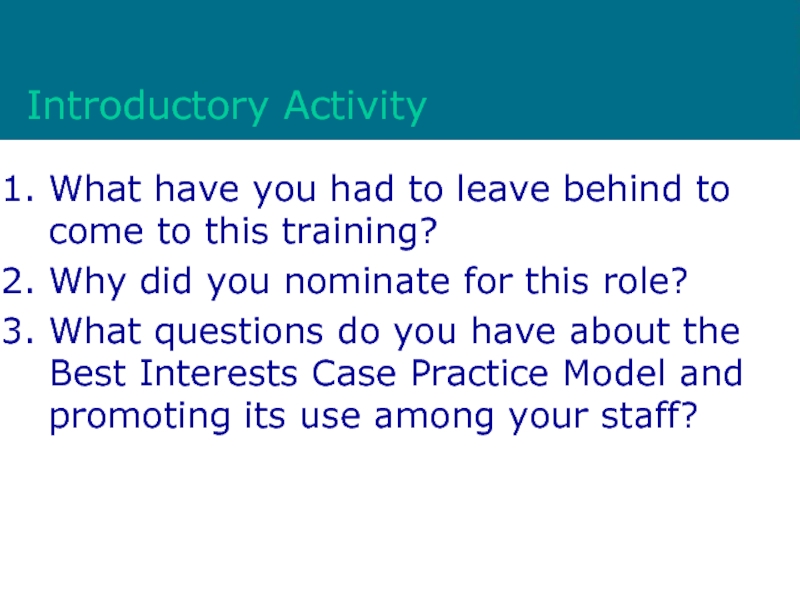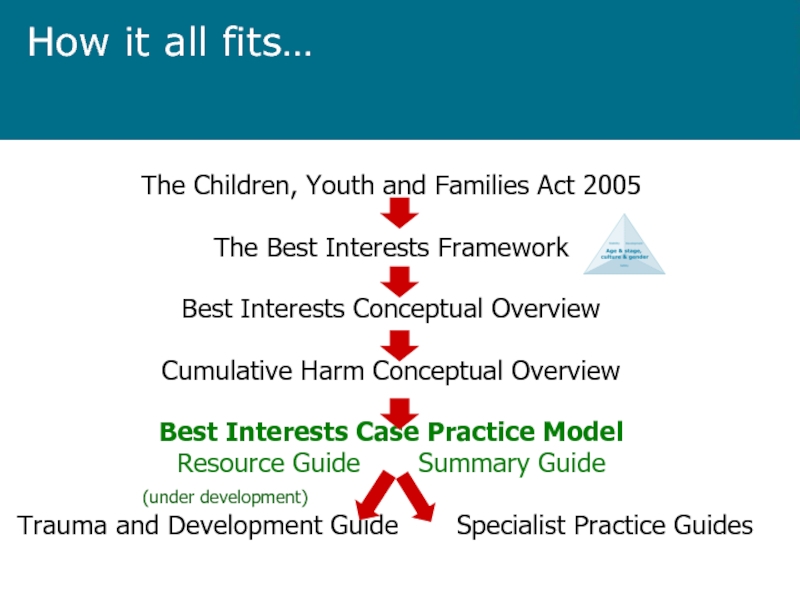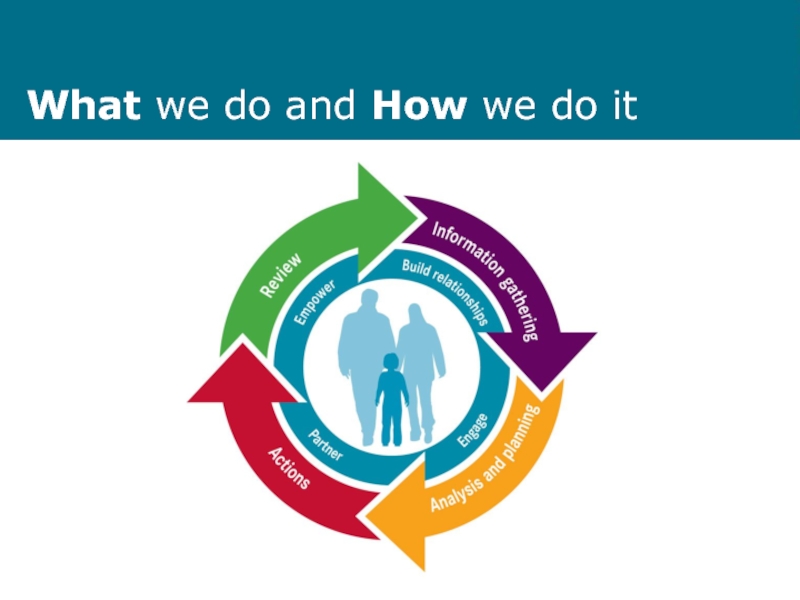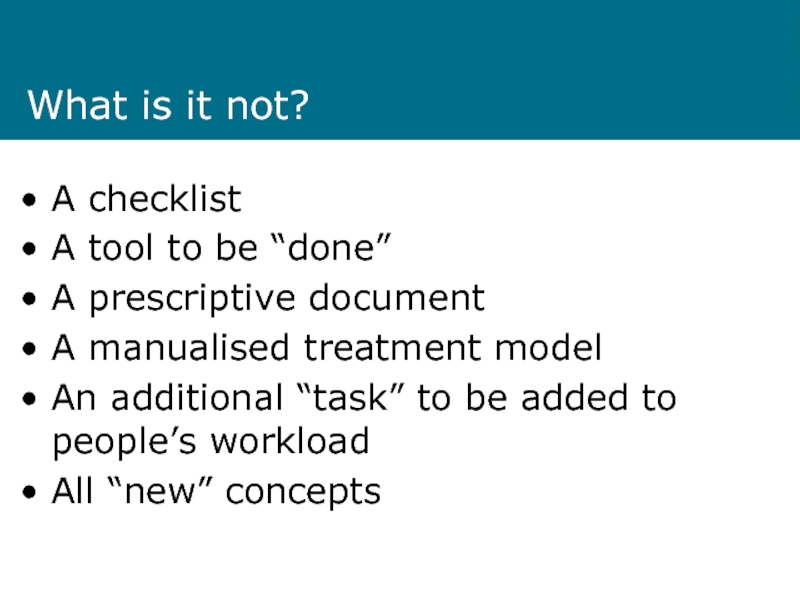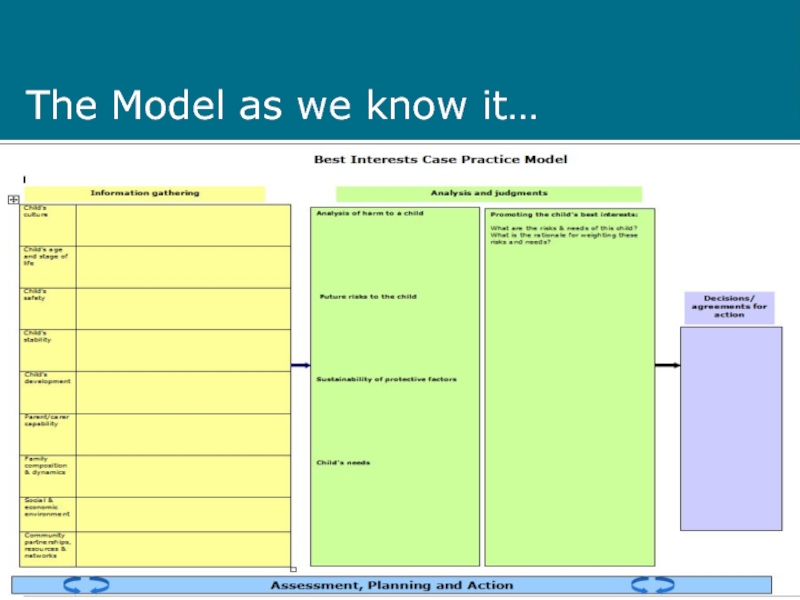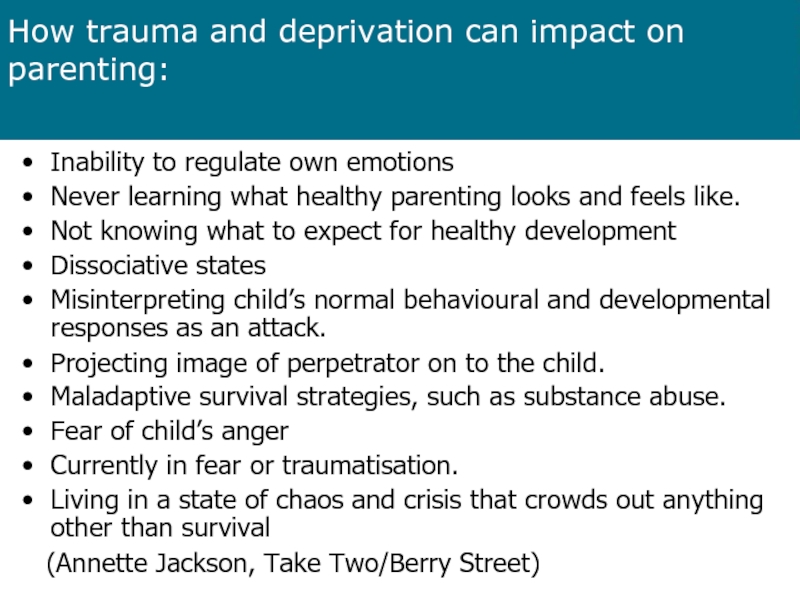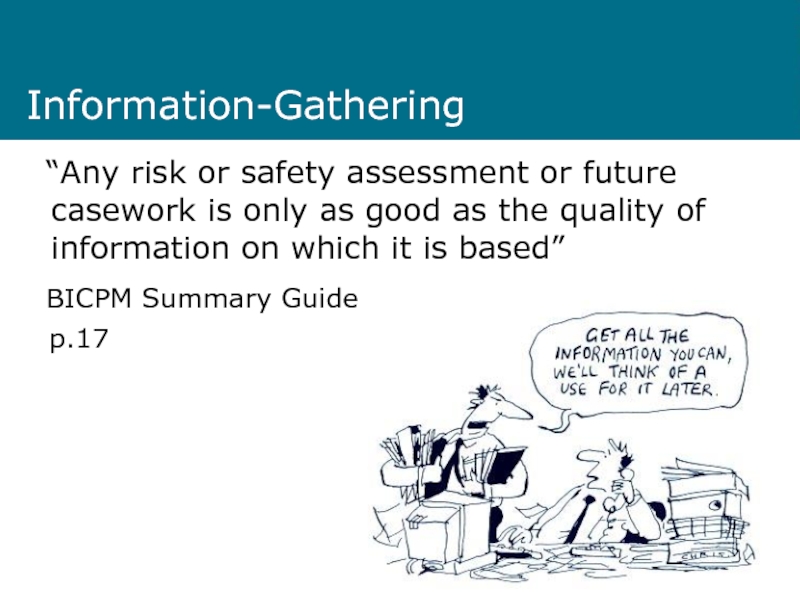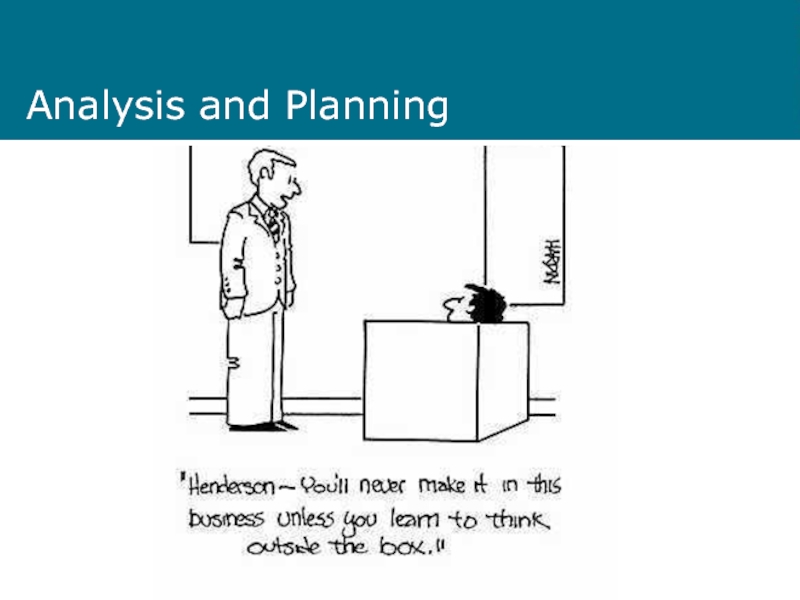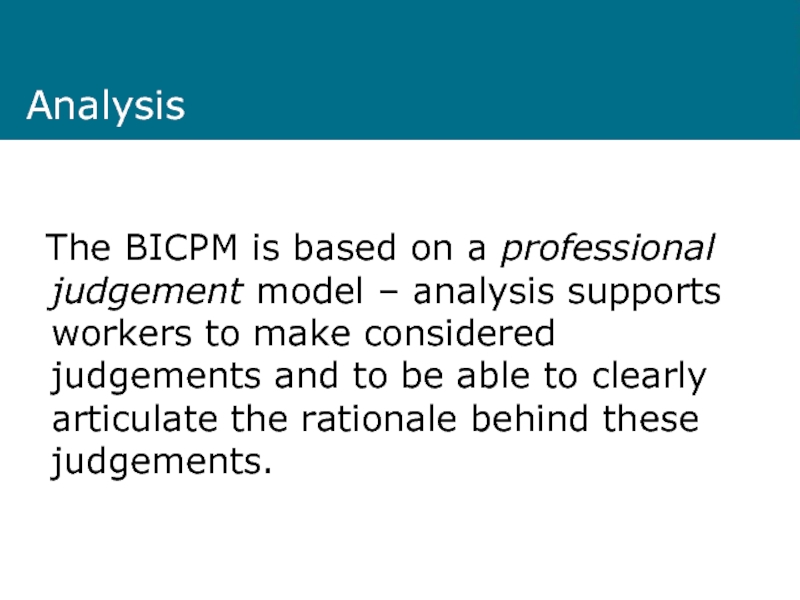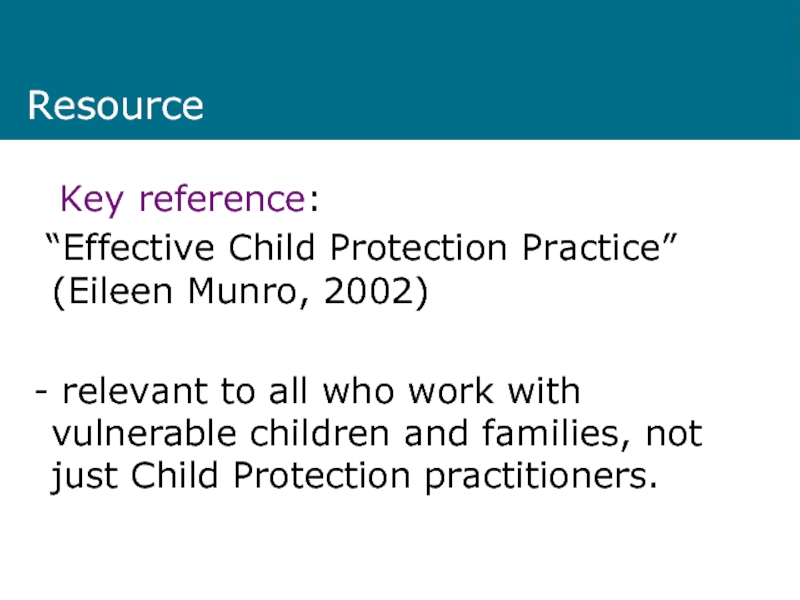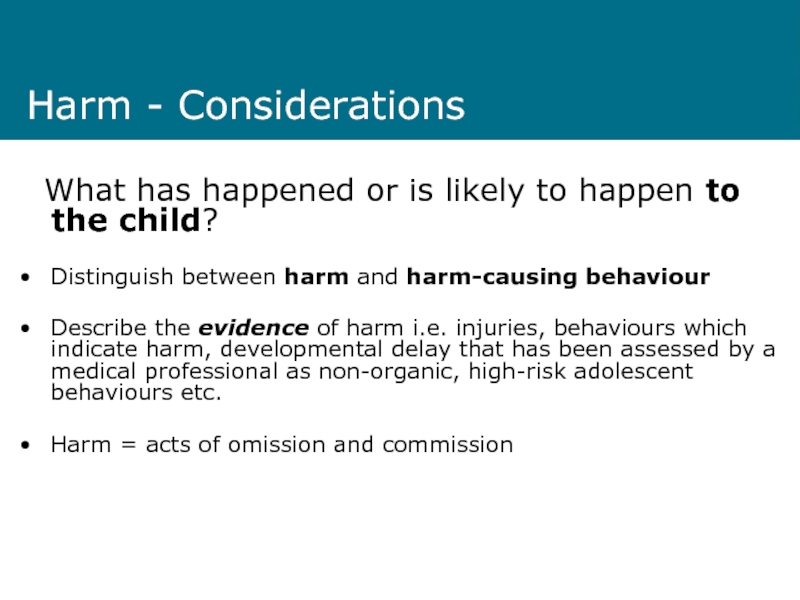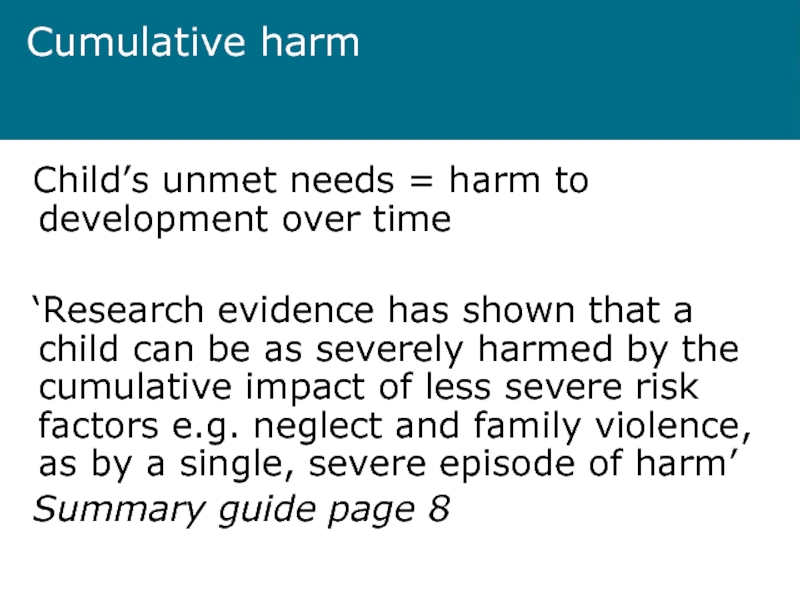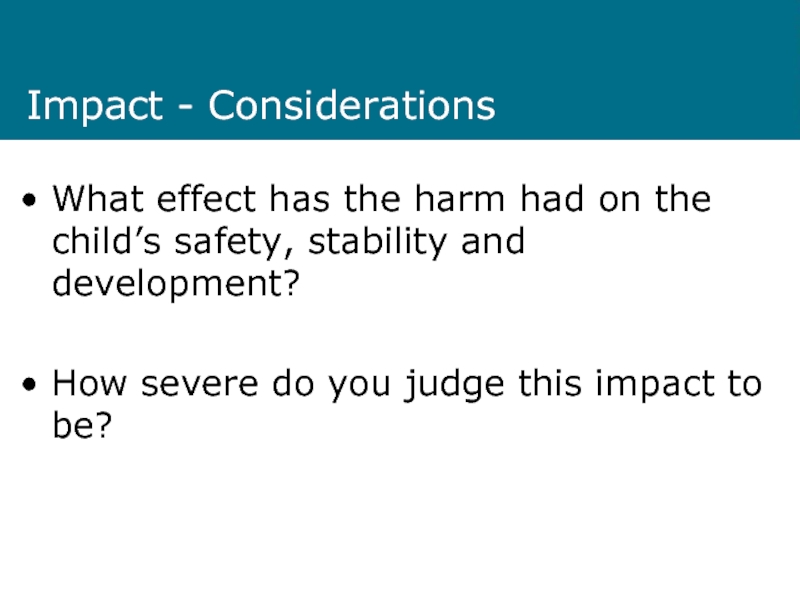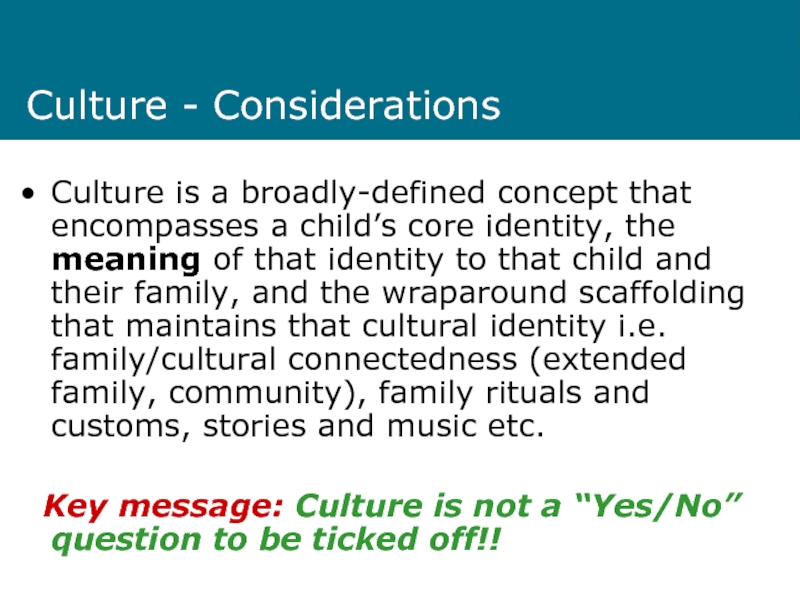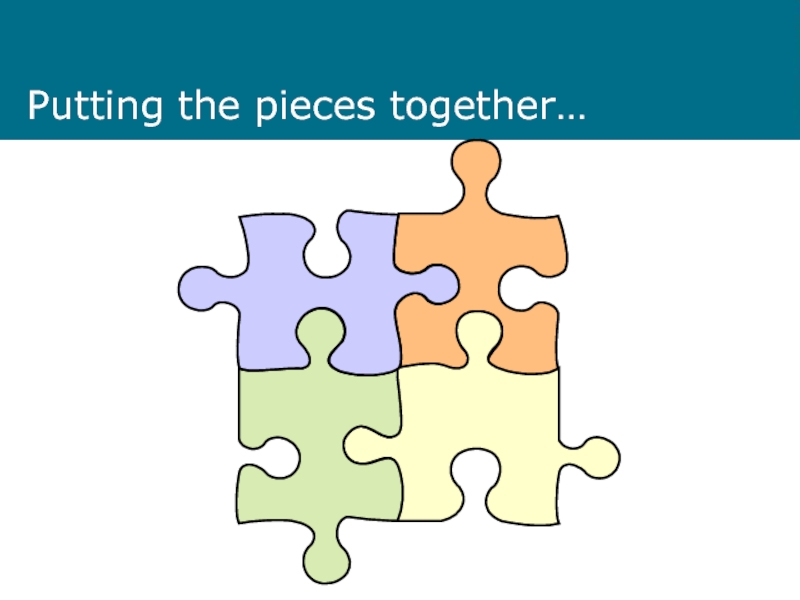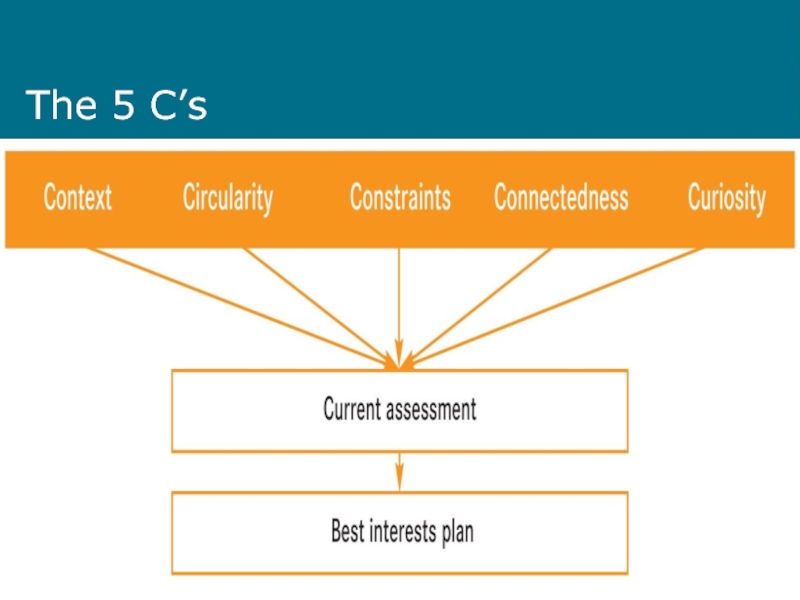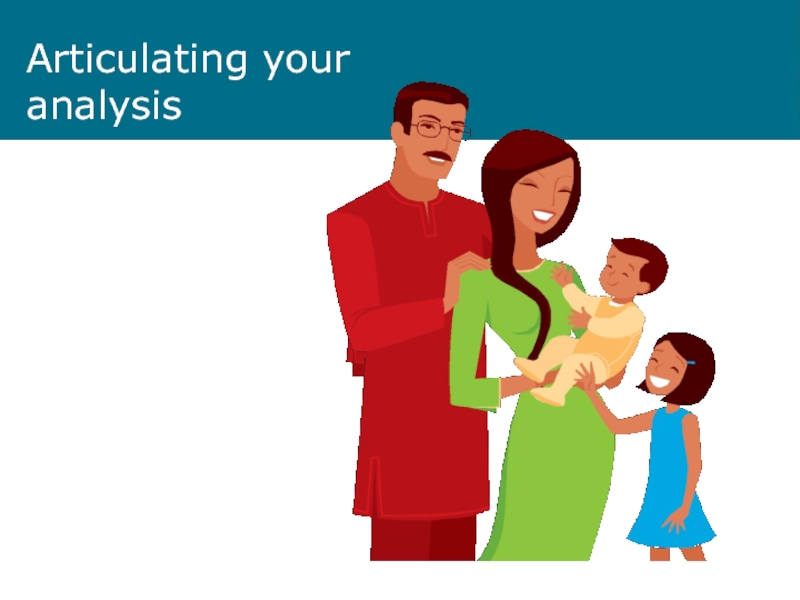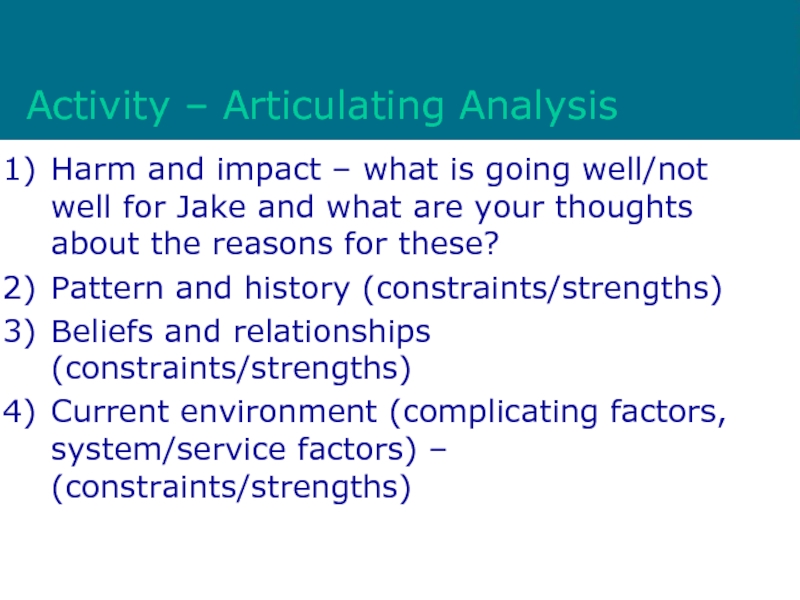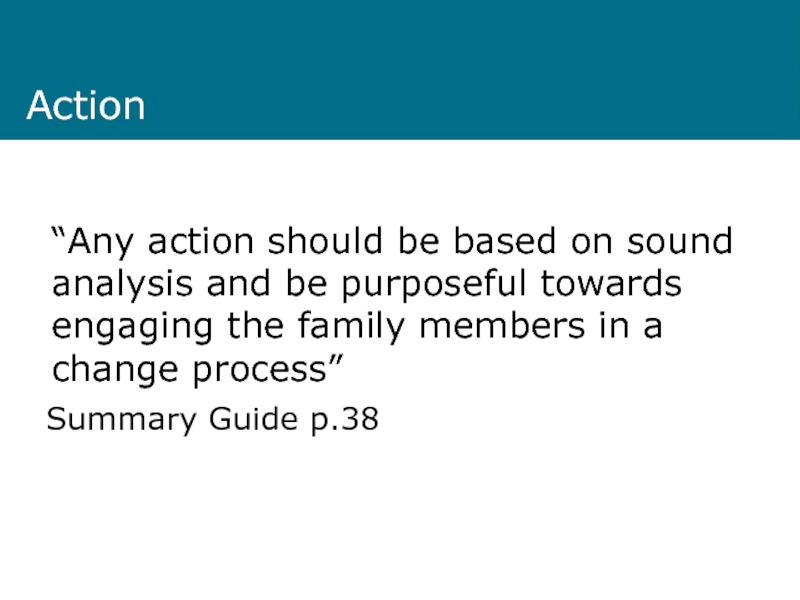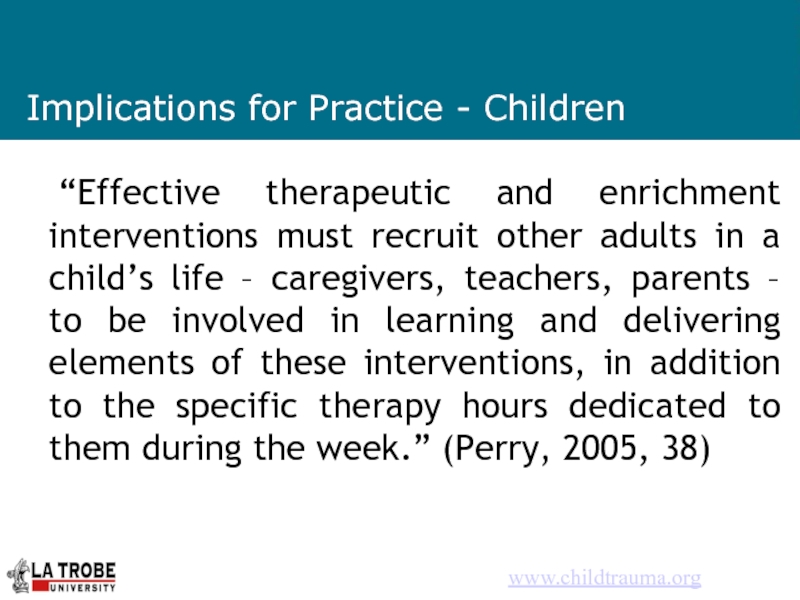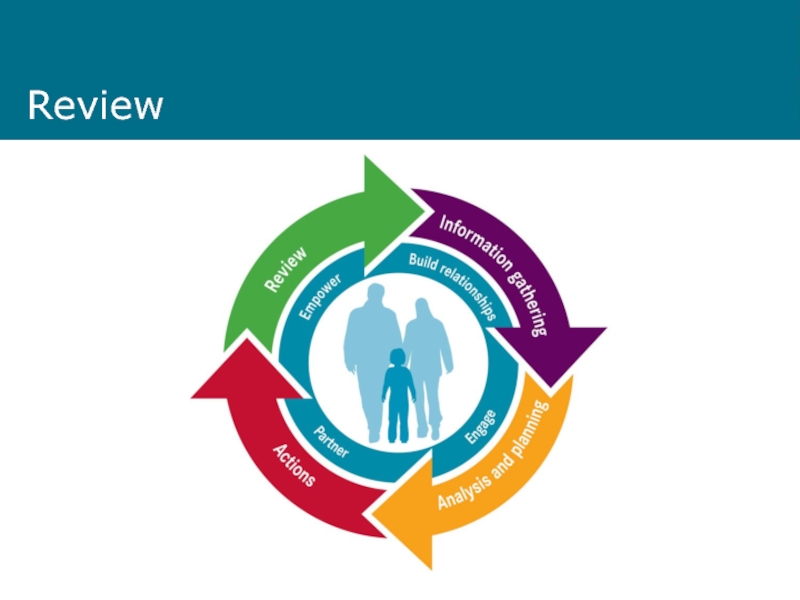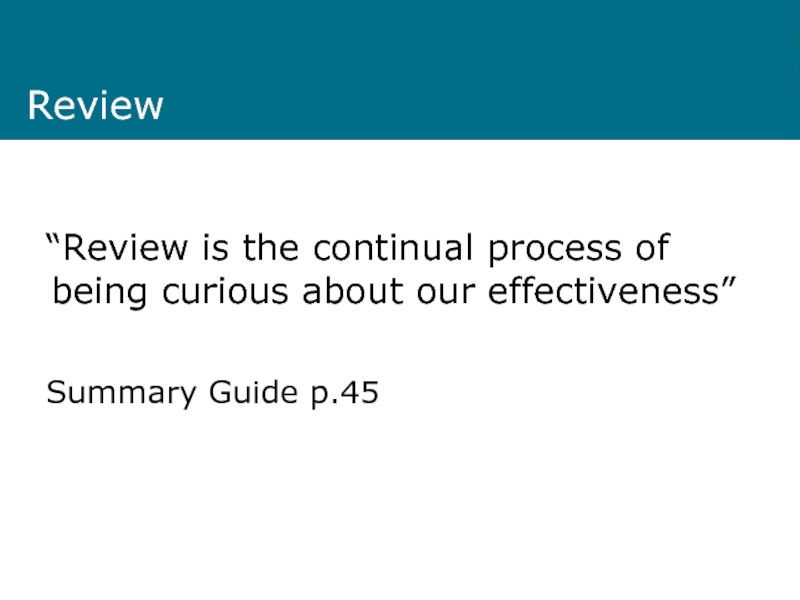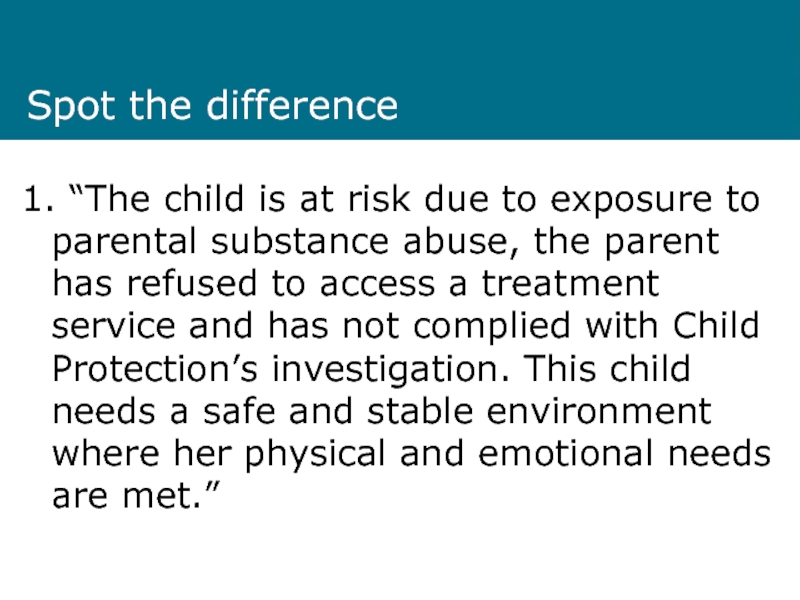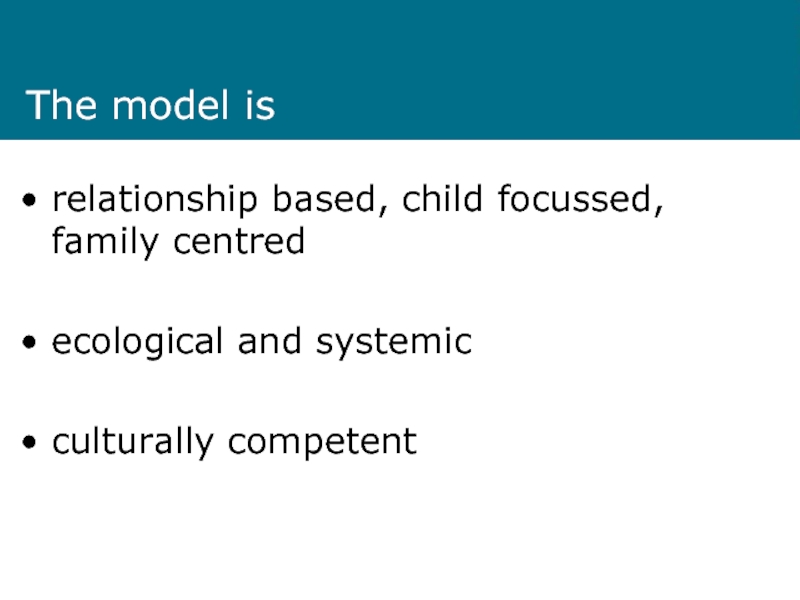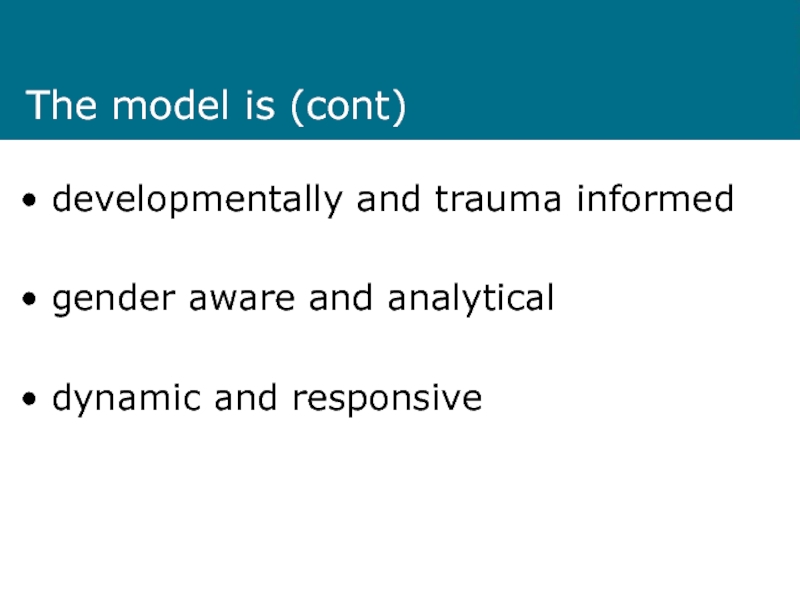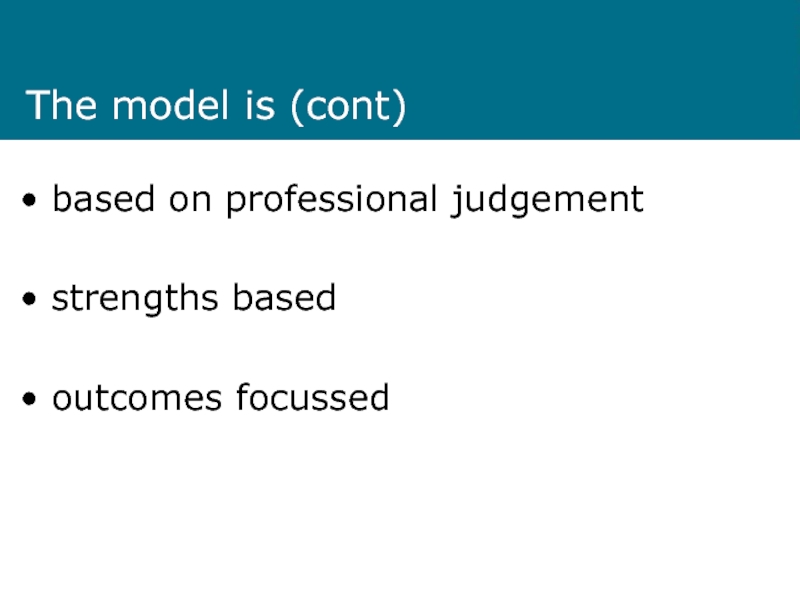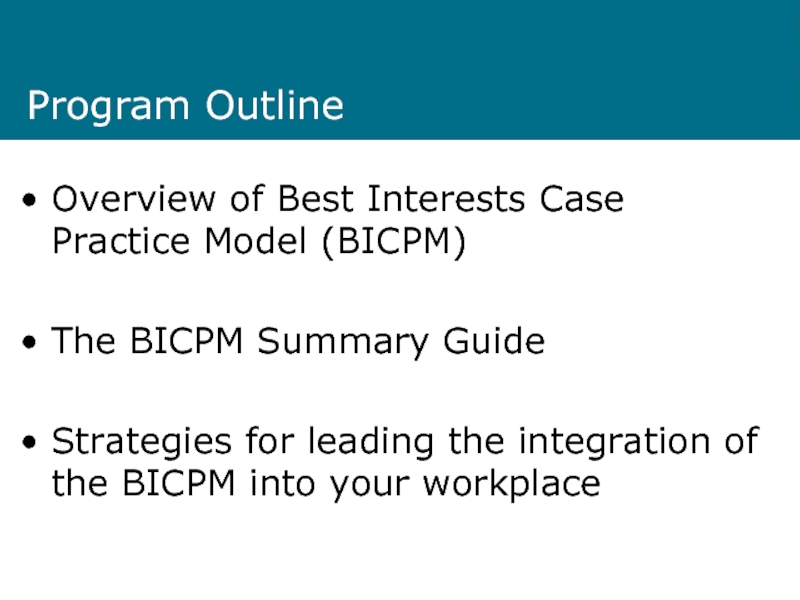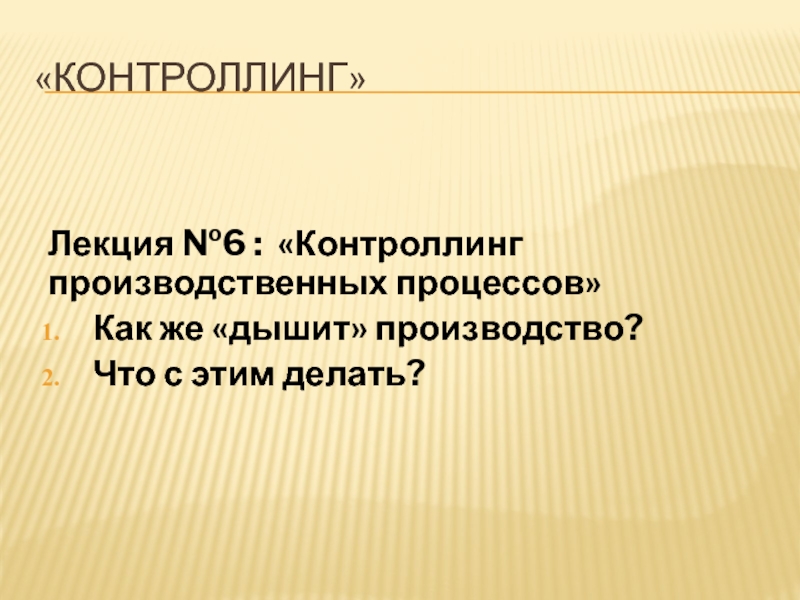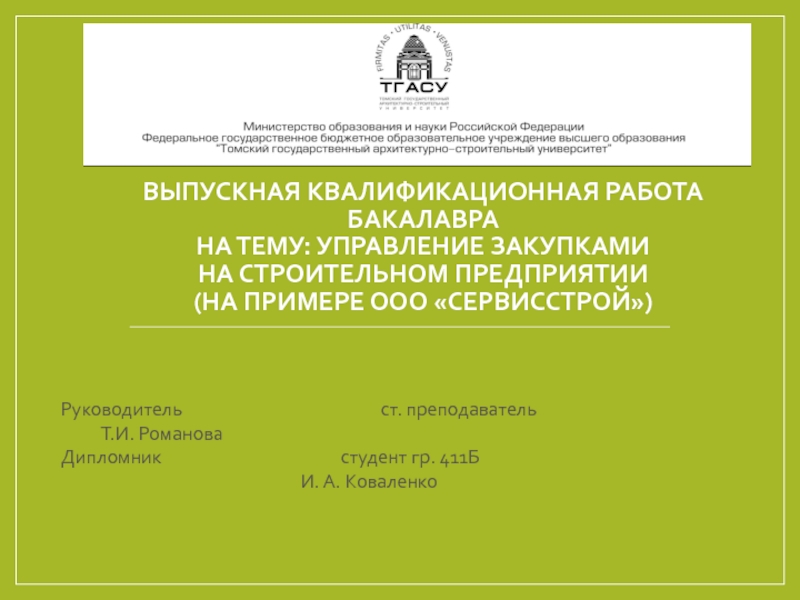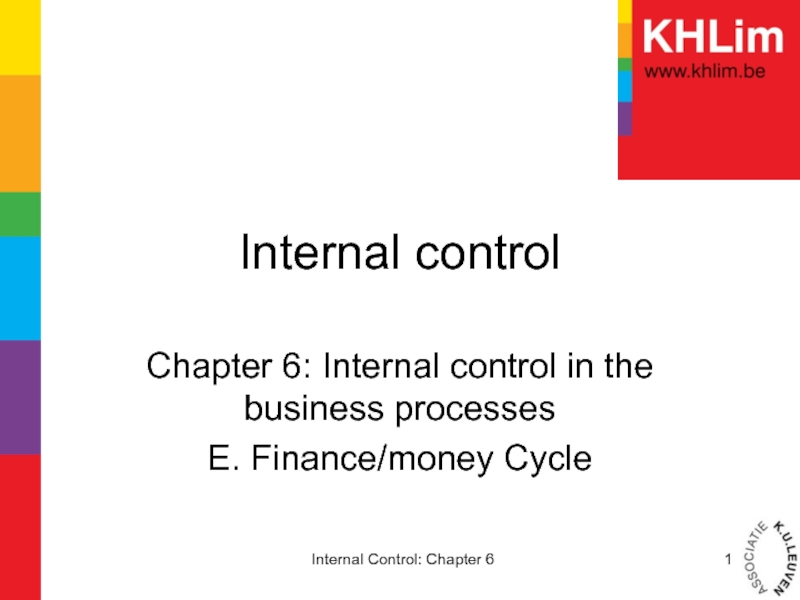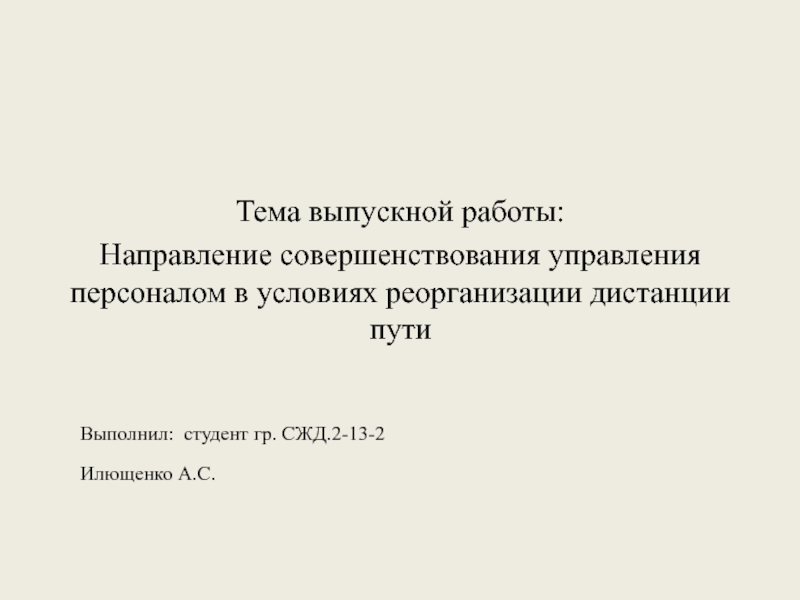- Главная
- Разное
- Дизайн
- Бизнес и предпринимательство
- Аналитика
- Образование
- Развлечения
- Красота и здоровье
- Финансы
- Государство
- Путешествия
- Спорт
- Недвижимость
- Армия
- Графика
- Культурология
- Еда и кулинария
- Лингвистика
- Английский язык
- Астрономия
- Алгебра
- Биология
- География
- Детские презентации
- Информатика
- История
- Литература
- Маркетинг
- Математика
- Медицина
- Менеджмент
- Музыка
- МХК
- Немецкий язык
- ОБЖ
- Обществознание
- Окружающий мир
- Педагогика
- Русский язык
- Технология
- Физика
- Философия
- Химия
- Шаблоны, картинки для презентаций
- Экология
- Экономика
- Юриспруденция
A Framework for Practice: The Best Interests Case Practice Model Summary Guide презентация
Содержание
- 1. A Framework for Practice: The Best Interests Case Practice Model Summary Guide
- 2. Program Outline Overview of Best Interests Case
- 3. Introductory Activity What have you had to
- 4. The Best Interests Framework
- 5. How it all fits… The Children, Youth
- 6. Learning and Development Strategy Phase 1 –
- 7. Lead the way!!
- 8. What we do and How we do it
- 9. Key Message We can
- 10. Key Message The Best Interests
- 11. What is it not? A checklist A
- 12. The Model as we know it…
- 13. Trauma and Development The parents of
- 14. How trauma and deprivation can impact on
- 15. What we do and How we do it
- 16. Information-Gathering “Any risk or safety assessment
- 17. Tools for Information-Gathering: How we do it
- 18. Analysis and Planning
- 19. Analysis The BICPM is based
- 20. Professional judgement “It is important that
- 21. Resource Key reference: “Effective
- 22. Analysis “Research and experience has shown
- 23. Analysis – Risk Assessment The BICPM should
- 24. Definitions Harm/Cumulative Harm Impact Vulnerability Sustainability Culture Activity: define these terms
- 25. Harm - Considerations What has
- 26. Cumulative harm Child’s unmet needs =
- 27. Impact - Considerations What effect has the
- 28. Vulnerability - Considerations Considering the child’s age,
- 29. Sustainability - Considerations Where strengths and/or protections
- 30. Culture - Considerations Culture is a broadly-defined
- 31. Thinking…
- 32. Taking a good look…
- 33. Putting the pieces together…
- 34. Making sense of it all
- 35. The 5 C’s
- 36. Articulating Your Analysis “Practitioners need to
- 37. Articulating your Analysis
- 38. Articulating your analysis
- 39. Articulating your analysis
- 40. Articulating your analysis
- 41. Articulating your analysis
- 42. Activity – Articulating Analysis Harm and impact
- 43. Key Message Any plans and recommendations
- 44. Action “Any action should be based
- 45. Action Engagement of the family in an
- 46. Engagement “Possibly the strongest indicator
- 47. Family Group Conferencing and Aboriginal Family Decision
- 48. Implications for Practice - Children “Effective therapeutic
- 49. Key Message “Where there is harm,
- 50. Review
- 51. Review “Review is the continual
- 52. Review “Review information frequently. Identify gaps.
- 53. The child’s lived experience
- 54. Spot the difference 1. “The child is
- 55. Spot the difference 2. “The child’s physical
- 56. The model is relationship based, child
- 57. The model is (cont) developmentally and trauma
- 58. The model is (cont) based on professional judgement strengths based outcomes focussed
- 59. Reflective Practice The BICPM requires reflective practice:
- 60. Reflective Practice
- 61. Forums for Reflective Practice Supervision Case conferences
- 62. Activity: Where to from here? What are
- 63. Where to from here?
- 64. Obstacles…
- 65. Program Outline Overview of Best Interests Case
- 66. Resources every child every chance documents on
- 67. Resources –Specialist Practice Guides By end
- 68. Lead the way!!
Слайд 2Program Outline
Overview of Best Interests Case Practice Model (BICPM)
The BICPM Summary
Guide
Strategies for leading the integration of the BICPM into your workplace
Strategies for leading the integration of the BICPM into your workplace
Слайд 3Introductory Activity
What have you had to leave behind to come to
this training?
Why did you nominate for this role?
What questions do you have about the Best Interests Case Practice Model and promoting its use among your staff?
Why did you nominate for this role?
What questions do you have about the Best Interests Case Practice Model and promoting its use among your staff?
Слайд 5How it all fits…
The Children, Youth and Families Act 2005
The Best
Interests Framework
Best Interests Conceptual Overview
Cumulative Harm Conceptual Overview
Best Interests Case Practice Model
Resource Guide Summary Guide
(under development)
Trauma and Development Guide Specialist Practice Guides
Best Interests Conceptual Overview
Cumulative Harm Conceptual Overview
Best Interests Case Practice Model
Resource Guide Summary Guide
(under development)
Trauma and Development Guide Specialist Practice Guides
Слайд 6Learning and Development Strategy
Phase 1 – Preparing for Enactment
Phase 2 –
Embedding Reforms
Phase 3 – Ensuring Lasting Cultural
Change
Phase 3 – Ensuring Lasting Cultural
Change
Слайд 10Key Message
The Best Interests Case Practice Model is a process
and a way of thinking.
It is not an event.
It is not an event.
Слайд 11What is it not?
A checklist
A tool to be “done”
A prescriptive document
A
manualised treatment model
An additional “task” to be added to people’s workload
All “new” concepts
An additional “task” to be added to people’s workload
All “new” concepts
Слайд 13Trauma and Development
The parents of the children we work with
are often impacted by trauma themselves.
“Remain compassionate to the distress that children and families experience and mindful that anger and resistance usually reflect the hurt and overwhelm that lies beneath” (Summary Guide p.15)
“Remain compassionate to the distress that children and families experience and mindful that anger and resistance usually reflect the hurt and overwhelm that lies beneath” (Summary Guide p.15)
Слайд 14How trauma and deprivation can impact on parenting:
Inability to regulate own
emotions
Never learning what healthy parenting looks and feels like.
Not knowing what to expect for healthy development
Dissociative states
Misinterpreting child’s normal behavioural and developmental responses as an attack.
Projecting image of perpetrator on to the child.
Maladaptive survival strategies, such as substance abuse.
Fear of child’s anger
Currently in fear or traumatisation.
Living in a state of chaos and crisis that crowds out anything other than survival
(Annette Jackson, Take Two/Berry Street)
Never learning what healthy parenting looks and feels like.
Not knowing what to expect for healthy development
Dissociative states
Misinterpreting child’s normal behavioural and developmental responses as an attack.
Projecting image of perpetrator on to the child.
Maladaptive survival strategies, such as substance abuse.
Fear of child’s anger
Currently in fear or traumatisation.
Living in a state of chaos and crisis that crowds out anything other than survival
(Annette Jackson, Take Two/Berry Street)
Слайд 16Information-Gathering
“Any risk or safety assessment or future casework is only
as good as the quality of information on which it is based”
BICPM Summary Guide
p.17
BICPM Summary Guide
p.17
Слайд 17Tools for Information-Gathering: How we do it
Genograms
Eco-maps
Timelines
Assist in drawing out the
family’s story
Assist practitioners to think and act systemically
Assist practitioners to think and act systemically
Слайд 19Analysis
The BICPM is based on a professional judgement model –
analysis supports workers to make considered judgements and to be able to clearly articulate the rationale behind these judgements.
Слайд 20Professional judgement
“It is important that practitioners are aware of the
problems associated with professional judgement. These problems include a lack of recognition of known risk factors, the predominance of verbal evidence over written, a focus on the immediate present or latest episode rather than considering significant historical information, and a failure to revise initial assessments in the light of new information”.
(Munro 1999)
(Munro 1999)
Слайд 21Resource
Key reference:
“Effective Child Protection Practice” (Eileen Munro, 2002)
- relevant to all who work with vulnerable children and families, not just Child Protection practitioners.
Слайд 22Analysis
“Research and experience has shown that there is usually lots
of information available about the child and family, however reviews of practice often find that there was insufficient shared analysis to form a good plan”
Summary Guide p. 9
Summary Guide p. 9
Слайд 23Analysis – Risk Assessment
The BICPM should not be viewed by practitioners
only as a risk assessment tool – it is a framework for practice.
The BICPM asks us to carefully analyse the information we have, taking into consideration historical, systemic and ecological factors, to inform our risk and needs assessment, as well as our planning, actions and review.
Key message: The BICPM does not become redundant once you have done your risk assessment.
The BICPM asks us to carefully analyse the information we have, taking into consideration historical, systemic and ecological factors, to inform our risk and needs assessment, as well as our planning, actions and review.
Key message: The BICPM does not become redundant once you have done your risk assessment.
Слайд 24Definitions
Harm/Cumulative Harm
Impact
Vulnerability
Sustainability
Culture
Activity: define these terms
Слайд 25Harm - Considerations
What has happened or is likely to
happen to the child?
Distinguish between harm and harm-causing behaviour
Describe the evidence of harm i.e. injuries, behaviours which indicate harm, developmental delay that has been assessed by a medical professional as non-organic, high-risk adolescent behaviours etc.
Harm = acts of omission and commission
Distinguish between harm and harm-causing behaviour
Describe the evidence of harm i.e. injuries, behaviours which indicate harm, developmental delay that has been assessed by a medical professional as non-organic, high-risk adolescent behaviours etc.
Harm = acts of omission and commission
Слайд 26Cumulative harm
Child’s unmet needs = harm to development over time
‘Research evidence has shown that a child can be as severely harmed by the cumulative impact of less severe risk factors e.g. neglect and family violence, as by a single, severe episode of harm’
Summary guide page 8
Summary guide page 8
Слайд 27Impact - Considerations
What effect has the harm had on the child’s
safety, stability and development?
How severe do you judge this impact to be?
How severe do you judge this impact to be?
Слайд 28Vulnerability - Considerations
Considering the child’s age, stage, culture and gender, how
do these factors increase/decrease this particular child’s vulnerability to further harm?
Does the child’s particular temperament/personality impact on their vulnerability to further harm?
Does the child have a physical/intellectual disability that adds to their vulnerability to further harm?
Are there socio-economic factors that make this child more/less vulnerable to further harm?
Do family patterns indicate increased vulnerability to the child?
Does the child’s particular temperament/personality impact on their vulnerability to further harm?
Does the child have a physical/intellectual disability that adds to their vulnerability to further harm?
Are there socio-economic factors that make this child more/less vulnerable to further harm?
Do family patterns indicate increased vulnerability to the child?
Слайд 29Sustainability - Considerations
Where strengths and/or protections have been identified, how do
we assess the likelihood that they can be sustained over time?
Strengths should not be confused with safety
Strengths should not be confused with safety
Слайд 30Culture - Considerations
Culture is a broadly-defined concept that encompasses a child’s
core identity, the meaning of that identity to that child and their family, and the wraparound scaffolding that maintains that cultural identity i.e. family/cultural connectedness (extended family, community), family rituals and customs, stories and music etc.
Key message: Culture is not a “Yes/No” question to be ticked off!!
Key message: Culture is not a “Yes/No” question to be ticked off!!
Слайд 36Articulating Your Analysis
“Practitioners need to be able to present evidence
to the Children’s Court that shows the effects of harm…and future risks to children’s safety, stability and development. The Court will also want to know the rationale for professional judgements and decision-making, what assistance has been provided to the family and the outcomes of previous interventions, all supported by evidence.”
Summary Guide p.4
Summary Guide p.4
Слайд 42Activity – Articulating Analysis
Harm and impact – what is going well/not
well for Jake and what are your thoughts about the reasons for these?
Pattern and history (constraints/strengths)
Beliefs and relationships (constraints/strengths)
Current environment (complicating factors, system/service factors) – (constraints/strengths)
Pattern and history (constraints/strengths)
Beliefs and relationships (constraints/strengths)
Current environment (complicating factors, system/service factors) – (constraints/strengths)
Слайд 43Key Message
Any plans and recommendations that we develop must clearly
and logically flow from our analysis.
Слайд 44Action
“Any action should be based on sound analysis and be purposeful
towards engaging the family members in a change process”
Summary Guide p.38
Summary Guide p.38
Слайд 45Action
Engagement of the family in an action plan is fundamental to
its success
True engagement is when the family signs on to a common agenda for change.
True engagement is when the family signs on to a common agenda for change.
Слайд 46Engagement
“Possibly the strongest indicator of engagement is when you feel
you can talk about change without fear of jeopardising the relationship”
(The Bouverie Centre 2006)
(The Bouverie Centre 2006)
Слайд 47Family Group Conferencing and Aboriginal Family Decision Making
AFDM and FGC give
a strong message of partnership and empowerment to the family.
AFDM is culturally appropriate
AFDM/FGC convenors exist in DHS in each region
We must give greater consideration to engaging absent fathers and their families
AFDM is culturally appropriate
AFDM/FGC convenors exist in DHS in each region
We must give greater consideration to engaging absent fathers and their families
Слайд 48Implications for Practice - Children
“Effective therapeutic and enrichment interventions must recruit
other adults in a child’s life – caregivers, teachers, parents – to be involved in learning and delivering elements of these interventions, in addition to the specific therapy hours dedicated to them during the week.” (Perry, 2005, 38)
www.childtrauma.org
Слайд 49Key Message
“Where there is harm, referral to another service will
not ensure that the family will engage or that change will occur. There needs to be active casework to ensure that the family engages with the service in a meaningful way.”
(Summary Guide p.29)
(Summary Guide p.29)
Слайд 51Review
“Review is the continual process of being curious about our
effectiveness”
Summary Guide p.45
Summary Guide p.45
Слайд 52Review
“Review information frequently. Identify gaps. Be open to changing your
initial views rather than interpreting new information in a way that supports a pre-existing opinion of a child or family”
BICPM Summary Guide p.17
BICPM Summary Guide p.17
Слайд 54Spot the difference
1. “The child is at risk due to exposure
to parental substance abuse, the parent has refused to access a treatment service and has not complied with Child Protection’s investigation. This child needs a safe and stable environment where her physical and emotional needs are met.”
Слайд 55Spot the difference
2. “The child’s physical safety is at risk as
the parent’s substance use occurs when the parent is the sole supervisor of the child. The child displays evidence of harm to her development in her delayed speech, her untreated eczema and her significant weight loss over the past month”
Слайд 56The model is
relationship based, child focussed, family centred
ecological and systemic
culturally
competent
Слайд 57The model is (cont)
developmentally and trauma informed
gender aware and analytical
dynamic and
responsive
Слайд 59Reflective Practice
The BICPM requires reflective practice:
“In Victoria there is
a strong commitment to strengthening a culture of reflective practice so that the best interests of children are achieved” (p.49)
Слайд 61Forums for Reflective Practice
Supervision
Case conferences
Peer supervision
Team meetings
Individual reflection
Reflective Practice prompts
are in the Summary Guide (p.49)
Слайд 62Activity: Where to from here?
What are we doing well?
Where do we
need to further develop in terms of Best Interests?
What strategies can I use to promote Best Interests:
Within my team
Within my organisation
Across services in my local area
Across my region
What networks/resources do I know of that can be a part of this strategy?
What strategies can I use to promote Best Interests:
Within my team
Within my organisation
Across services in my local area
Across my region
What networks/resources do I know of that can be a part of this strategy?
Слайд 63 Where to from here?
Possible obstacles to embedding the
Best Interests Case Practice Model?
Crisis driven; dealing with the urgent, neglecting the important
We’re too busy
I already act in children’s Best Interests, always have.
Workplace culture
Hierarchy
CRIS compatibility
CSO Registration process
Resources
Recruitment and retention
What can we as “champions” do to address these?
Crisis driven; dealing with the urgent, neglecting the important
We’re too busy
I already act in children’s Best Interests, always have.
Workplace culture
Hierarchy
CRIS compatibility
CSO Registration process
Resources
Recruitment and retention
What can we as “champions” do to address these?
Слайд 65Program Outline
Overview of Best Interests Case Practice Model (BICPM)
The BICPM Summary
Guide
Strategies for leading the integration of the BICPM into your workplace
Strategies for leading the integration of the BICPM into your workplace
Слайд 66Resources
every child every chance documents on website:
The Best Interests
Framework
The Best Interests Principles – Conceptual Overview
Child Development and Trauma Guide
Cumulative harm – Conceptual Overview
Stability – Guidance Paper
Strategic Framework for Family Services
Fact Sheets
Reference list at back of Summary Guide
Child Protection Practice Manual
The Best Interests Principles – Conceptual Overview
Child Development and Trauma Guide
Cumulative harm – Conceptual Overview
Stability – Guidance Paper
Strategic Framework for Family Services
Fact Sheets
Reference list at back of Summary Guide
Child Protection Practice Manual
Слайд 67Resources –Specialist Practice Guides
By end 2008
Working with vulnerable infants
Young people 10-14
years with problematic sexualised behaviours
Children under 10 years with problematic sexualised behaviours
Engaging parents: assessing and enhancing parenting capability/capacity
Working with young people
Working with families in which someone is abusive
By mid 2009
Stability – child and family
Stability in long term out of home care
Stability and issues associated with reunification
Cumulative Harm
Children under 10 years with problematic sexualised behaviours
Engaging parents: assessing and enhancing parenting capability/capacity
Working with young people
Working with families in which someone is abusive
By mid 2009
Stability – child and family
Stability in long term out of home care
Stability and issues associated with reunification
Cumulative Harm


